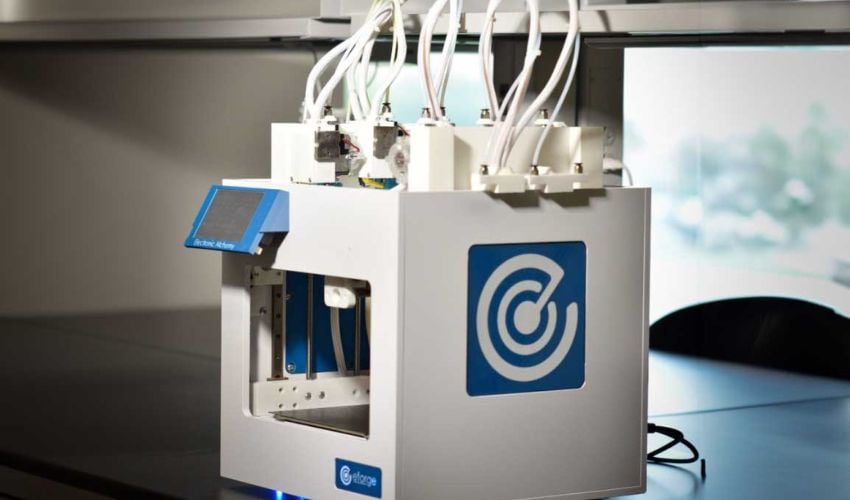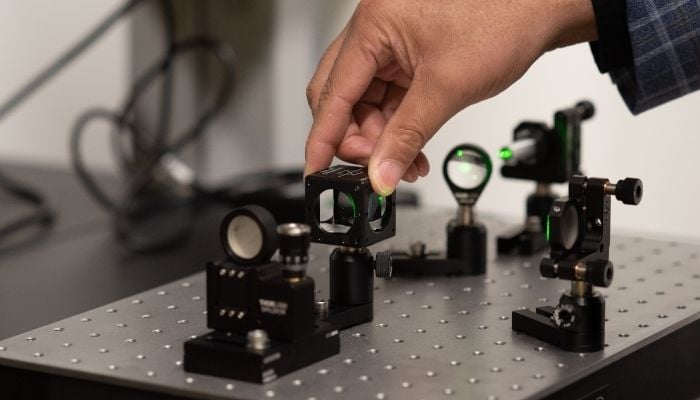Morningbird Space Develops 3D Technologies to Accelerate Space Conquest

It’s hard to ignore additive manufacturing when it comes to aerospace and space conquest. It would seem that the technology has become an essential means of designing more efficient parts and tools, rather like artificial intelligence. This is the context in which the American company Morningbird Space Corporation operates. It aims to develop solutions that facilitate space conquest and exploration. To this end, the company has turned its attention to additive manufacturing, developing a range of multi-material 3D printers capable of creating parts from six materials simultaneously, including plastics, metals and composites. The company has also developed a 3D printable humanoid robot to facilitate access to certain production methods and technologies such as CAD modeling, 3D printing and coding. To find out more about these projects, we spoke to Dr. Chance Glenn, founder and president of Morningbird Space Corporation.
3DN: Could you introduce yourself and explain your connection to additive manufacturing?
My name is Chance Glenn, and I am a full professor of Electrical Engineering at Alabama A&M University as well as the founder and President of Morningbird Space Corporation. I have a Ph.D. in Electrical Engineering from the Johns Hopkins University Whiting School of Engineering. I have been inspired to create innovative technologies for the space industry because of my love for science fiction, particularly the original Star Trek series. The world that they created and the wonders that they produced caused me to dream about doing the same things that Science Officer Mr. Spock and Chief Engineer Mr. Scott did. I became an engineer because of this and started down a road of invention. I am also motivated to teach and share the benefits of knowledge with my students as a way to keep a cycle of learning turning, because I believe that education changes lives. 3D printing is much like the “replicators” in Star Trek lore. Not too long ago, my colleague, Dr. Wing Chan, and I developed and patented a set of materials and a process to 3D print functional electronics devices. Since then, we have worked to commercialize this technology in the form of the Electronic Alchemy eforge. This work was funded by the NASA SBIR program and has helped us build into our company, Morningbird Space Corporation, a wealth of knowledge and capability in additive manufacturing.

Dr Chance Glenn
3DN: What is Morningbird Space, and why was it created?
Morningbird Space Corporation is a technology development company that focuses on creating, developing, and commercializing innovations for the space industry. We have expertise and are developing technologies in additive manufacturing, advanced propulsion, and autonomous construction. We have been funded by and created strong ties with NASA, the National Science Foundation, and SpaceX to name a few, as well as other space technology organizations. We have developed a strong tie with the Alabama A&M Research, Innovation, Science, and Engineering (AAMU-RISE) Foundation, all in an effort to bring cutting-edge science and technology to commercial reality.
3DN: Can you tell us more about Morningbird Space’s eforge 3D printers? Why are they suitable for space missions?

3DN: What kind of applications are you creating with your 3D printing technology?
At the moment, the product we are most excited about launching is the AppBot Educational Platform. The AppBot is a 3D printable humanoid robot used to train students in STEM-related skills in a fun and exciting way. Some of these skills are: additive manufacturing, computer-aided design, robotics, coding, artificial intelligence, electronics, mechanical design and teamwork. The printing, assembly, testing and operation of the AppBot can cover an entire semester or academic year for our K-12 target audience. The cool and wow factor is high in that the AppBot is driven by a smartphone app once constructed. Users will become part of the AppBot Developers Community, where they can share ideas, modifications, control sequences, pictures, videos, and other things to enhance their experience. Competitions can be established with the AppBot (design, races, dance-offs, fashion shows, etc.). The users will be provided with the file required to print the parts, and the electronic components and servos are all sourced from Amazon. The entire package is expected to be priced at $399.99, so it is affordable for educational institutions. Our goal is to spread the knowledge and ability to engage in STEM to as many communities worldwide as possible. We are in discussions with major organizations and institutions to partner in this effort.
3DN: How do you see the future of additive manufacturing in aerospace?
3DN: Any last words for our readers?
What do you think of Morningbird Space? Let us know in a comment below or on our LinkedIn or Facebook pages! Plus, don’t forget to sign up for our free weekly Newsletter to get the latest 3D printing news straight to your inbox. You can also find all our videos on our YouTube channel. For more 3D printing news in the aerospace and defense sectors, check out our dedicated page HERE.
*All Photo Credits: Morningbird Space









Morningbird Space is exactly the kind of forward-thinking company that reminds us how closely intertwined the future of space exploration is with additive manufacturing. Their work on multi-material 3D printing and the AppBot platform bridges two crucial worlds—advanced aerospace applications and accessible STEM education.
Morningbird Space is doing impressive work in space tech, particularly with 3D printing. Their innovations like the eforge printers and AppBot platform are advancing aerospace technology and making STEM education more accessible. Exciting times for space exploration!